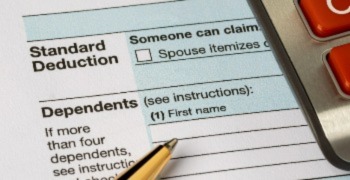
Use tax vs sales tax: What’s the difference?
There are more than 12,000 sales and use tax jurisdictions in the United States. Several thousand more jurisdictions have a sales tax just on lodging or food and beverages.
Key takeaways
- Sales tax and use tax are related but different
- There are two types of use tax
- Use tax is a common cause of negative audit findings
In this article
What is sales tax?
Sales tax is a tax on the exchange, sale, or transfer of taxable goods or services. It’s usually a percentage of the retail sales price.
What is use tax?
A complement to sales tax, use tax is a tax on taxable goods and services that are consumed, stored, or used in the taxing jurisdiction. For the most part, use tax applies when a seller doesn’t collect the taxing jurisdiction’s sales tax at the point of sale.
There are several ways to establish use tax liability:
- The seller didn’t have nexus and wasn’t required to charge sales tax
- The buyer bought goods in another state or country to consume or use in the taxing state
- The buyer is a business and consumed taxable goods or services purchased tax free
What’s the difference between use tax and sales tax?
The main difference between sales tax and use tax is who is liable for paying and reporting the tax.
Who pays sales tax?
The buyer pays sales tax. Sellers are responsible for collecting and remitting sales tax to the appropriate taxing authority in all states.
However, who is ultimately liable for sales tax in the event of an audit depends on whether the state is a “vendee” or a “vendor” state (also called “consumer tax” and “seller privilege” states).
Vendee (consumer tax) states
In a vendee or consumer tax state, sales tax is imposed on the buyer. Businesses are legally required to collect sales tax from the buyer and separately state it on invoices and receipts; they generally aren’t allowed to pay the sales tax on behalf of customers, which is called absorbing sales tax.
Sales tax in vendee states is considered a trust tax because sellers collect the tax, hold on to it, then remit it to the taxing authority when it’s due. Consumers and tax authorities trust that businesses will remit the sales taxes they collect.
However, in the event sales tax was wrong or not remitted, tax officials can hold either the buyer or the seller liable for unpaid tax in a vendee state.
Most states, including California and Texas, are vendee or consumer tax states.
Vendor (seller privilege) states
In a vendor or seller privilege state, sales tax is imposed on the business for the privilege of doing business in the state. Businesses are allowed to absorb sales tax (in other words, pay it themselves) but typically pass the tax on to the consumer instead. They may not be required to separately state the tax on invoices or statements.
States generally cannot go after a consumer for unpaid sales tax in a seller privilege state; tax authorities can only hold the seller liable in the event of a negative audit finding.
Arizona, Hawaii, and New Mexico are seller privilege states.
How to report sales tax
Before a business can legally collect, remit, or file sales tax, it must register for a sales tax permit.
Once you have a sales tax permit, the taxing authority will let you know how frequently you’re required to remit and report sales tax: monthly, quarterly, or annually.
When it comes time for you to report sales tax:
- Figure out how much sales tax you collected from customers during the reporting period
- Complete the tax return form online or on paper (most states now prefer or require online reporting)
- Submit the return and pay the tax due to the appropriate taxing authority
The state tax department administers state and applicable local sales taxes in most states, but there are a few exceptions to this rule. For example:
- In Alaska, there are local sales taxes but no state sales tax. Local sales taxes are administered either by the local jurisdiction or the Alaska Remote Seller Sales Tax Commission.
- In Colorado, the Colorado Department of Revenue administers the state sales tax and local sales taxes for some localities. However, some home-rule jurisdictions levy and administer their own local sales tax.
- In Louisiana, sales taxes are administered by the Louisiana Department of Revenue, the Sales and Use Tax Commission for Remote Sellers, Parish E-File, and the individual parishes.
Who pays use tax?
Who is responsible for paying use tax depends on whether it’s consumer use tax or seller use tax.
Consumer use tax
Consumers (buyers) are responsible for figuring out how much consumer use tax is due and paying it to the appropriate taxing authority. Businesses as well as individuals can be liable for consumer use tax.
Both individual and businesses will generally owe use tax if, while out of state, they purchase taxable goods for use or storage in the taxing state. Or, if they purchase taxable goods for delivery from a seller that doesn’t have nexus with the taxing state and therefore didn’t collect sales tax.
Additionally, a business will owe consumer use tax if it uses or consumes inventory or other items purchased tax free for resale or another purpose. For example:
- A grocery store that pulls a roll of paper towels off the shelf to clean up a spill would be liable for consumer use tax on the paper towels.
- A restaurant that comps a meal to a disgruntled customer would owe use tax on the value of that meal.
Buyers must self-assess consumer use tax — it doesn’t appear on invoices. Avalara AvaTax for Accounts Payable allows businesses to automate self-assessment of consumer use tax liability.
Seller use tax
Seller use tax (also known as sellers use tax, vendor use tax, or retailer use tax) is different from consumer use tax. It exists in some states, like Alabama, that make a distinction between interstate and intrastate sales. In these states:
- Sales tax is for intrastate sales (sales by an in-state business to an in-state consumer)
- Seller use tax is for interstate sales by out-of-state sellers
For the consumer, there’s no noticeable difference between sales tax and seller use tax: Both are applied by the retailer at checkout. Perhaps that’s why seller use tax is commonly referred to as sales tax even when technically it isn’t.
How to report use tax
Seller use tax is reported like sales tax: The retailer is responsible for collecting it from the buyer and remitting it to the taxing authority by the due date.
However, consumers are responsible for reporting consumer use tax.
There’s usually a line for individuals to report consumer use tax on state income tax returns. States with no state income tax generally have a specific form for consumer use tax, like this Washington state consumer use tax return. Many states allow or even prefer individuals to remit use tax online.
Businesses typically report consumer use tax on their regular sales and use tax return or excise tax return. If your business owes consumer use tax but doesn’t hold a sales and use tax permit, inquire about the best practice with your state tax authority or a trusted tax advisor.
In New York, for example, such taxpayers can report use tax on a personal income tax return or an individual purchaser’s report of sales and use tax.
Why does the difference between sales tax and use tax matter to businesses?
You need to understand the difference between sales tax and use tax if you’re a business because if you don’t, you may collect, remit, or report them incorrectly. Since sales tax is not the same as use tax, sales tax requirements often differ from use tax requirements.
Failure to collect and/or pay sales and use tax as required may result in a sales or use tax assessment, plus penalties and interest. Use tax is one of the most common causes of negative audit findings.
Sales and use tax FAQ
What states have a sales tax and a use tax?
Almost every state has some type of sales tax and use tax. The only states with no sales tax are Alaska, Delaware, Montana, New Hampshire, and Oregon — and Alaska allows local sales and use taxes.
Is there a national sales tax in the United States?
No, there’s no federal or national U.S. sales tax.
How do you know what sales tax rate to collect?
Sales tax rates are based on the location of the transaction and the sales tax sourcing rules used by the state.
Most states use destination sourcing, meaning sales tax rates are based on the location where the customer takes possession of the products sold or services rendered. This could be a brick-and-mortar store or a delivery address.
Some states base sales tax rates on the origin of the transaction, which is the location where the seller took the order or shipped the goods. A few states use destination sourcing for some transactions but origin sourcing for other transactions.
Every state uses destination sourcing for interstate sales even if they use origin sourcing inside the state.
How do you know what use tax rate to pay?
As with sales tax, use tax rates are based on the location of the transaction. For delivery sales, this is typically the location where the consumer took possession of the taxable goods.
If you owe use tax because you pulled inventory for your own use, the rate would be based on where the goods were consumed or used.
In many jurisdictions, sales and use tax rates for similar transactions are the same. In others, sales tax rates and use tax rates for similar transactions are different. This sales and use change notice from the Missouri Department of Revenue is a great example.
How is sales tax and use tax calculated?
Sales tax and use tax are a percentage of the retail sale price.
For sales tax and seller use tax, the seller adds the tax to the retail sales price at checkout. If you sell a book for $10 in a jurisdiction with a 5% sales tax rate, you’d charge the consumer $10.50: $10 for the book plus 50 cents in sales tax.
With consumer use tax, the consumer is responsible for knowing the applicable tax rate. If you live in a jurisdiction with a 5% sales and use tax rate, buy something taxable for $10, and the seller doesn’t collect sales tax, you would owe the state 50 cents in consumer use tax.
There are more than 12,000 sales and use tax jurisdictions in the U.S., and each jurisdiction has its own sales tax rate and reporting code. Calculating the correct rate for every transaction can be challenging, especially for businesses required to collect and remit sales tax in multiple states.
With Avalara AvaTax for Accounts Payable, businesses can manage use tax and sales tax with one platform. Doesn’t that sound grand?
This blog post has been updated. It was originally published in May 2023.

Avalara Tax Changes 2026 is here
The 10th edition of our annual report engagingly breaks down key policies related to sales tax, tariffs, and VAT.
Stay up to date
Sign up for our free newsletter and stay up to date with the latest tax news.















